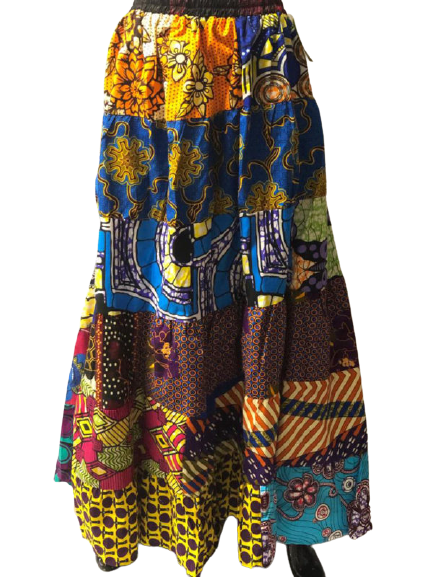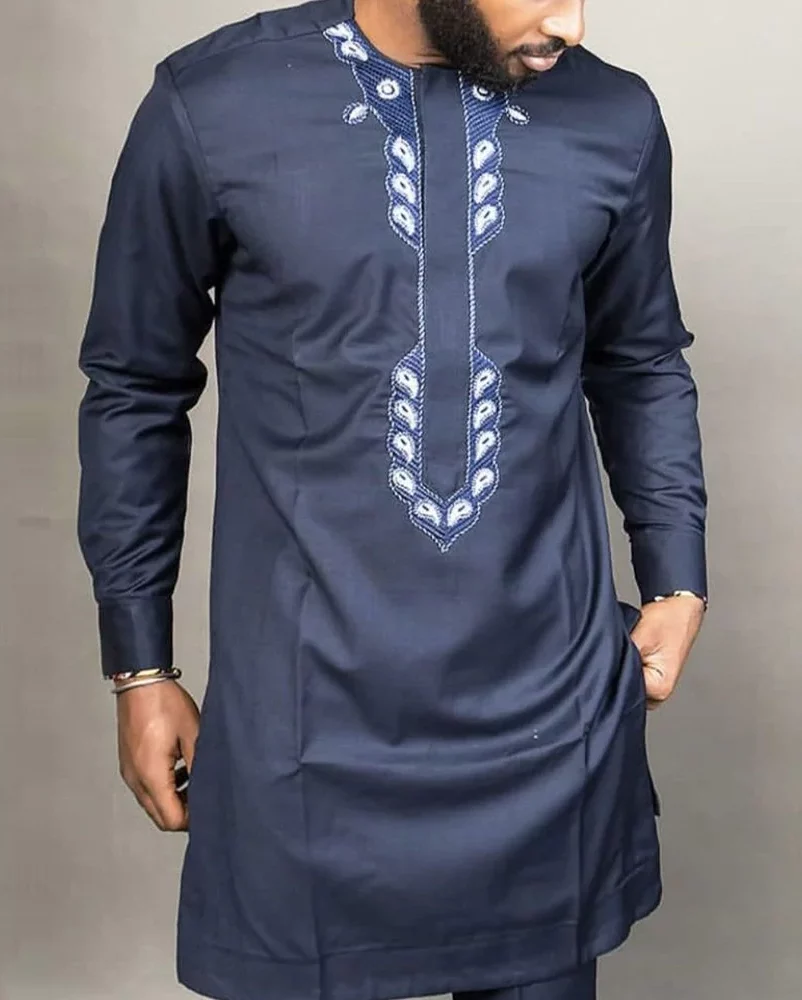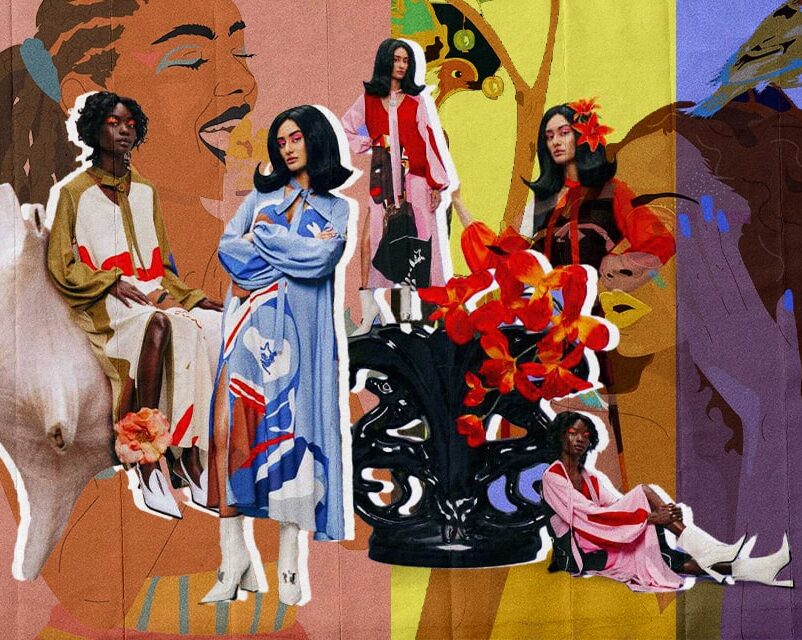
In a series titled Yesterday’s Shopping, photographer Sackitey Tesa Mate-Kodjo (pronounced ‘Mah-teh Koh-joe’) shot two male subjects dressed in wide-leg pants and corsets made of what looks like paper and blue ribbons. In the background are mounds of used plastic bottles—a symbol of fast fashion and its effects on the environment.
Going simply by Sackitey Tesa, the Ghanaian creative’s love for visual arts stems from childhood, flipping through his grandfather’s library of old magazines like Readers’ Digest and National Geographic, “just looking at images,” and playing with his father’s vintage Pentax camera. Still, he never thought of the visual arts as a career path, instead choosing to study Business Administration at the University of Ghana. It was only after graduating in 2017 that he began to explore photography as something worth pursuing professionally.

Yesterday’s Shopping, Sackitey Tesa. Photo: via Photo Vogue
One of the subjects the Accra-based photographer and stylist grapples with is the effects of secondhand clothing from developed countries on his immediate environment. It’s the social commentary behind this work—like Yesterday’s Shopping—that sets him apart from his contemporaries. Seeking to inject this kind of substance into his photography led Tesa down the path of styling and art direction, both of which he took up late in 2018 after purchasing his first DSLR camera. “I wanted to challenge myself to use styling for storytelling,” he explains. The result is the mesmerizing, prop-fueled imagery he has become known for.
In 2020, he did a project with WePresent titled “Atsɛɛ niŋ afɔɔɔ,” which translates to “things are not meant to be thrown away.” Tesa had models dressed in outfits made by upcycling tailors from Accra’s Kantamanto clothing market—Ghana’s largest for secondhand clothes. Indeed, a search through Youtube reveals an abundance of ‘thrifting’ videos taken at the market.
According to Fibre2Fashion.com, the Sub-Saharan region is the world’s largest destination for secondhand clothing, receiving close to 34 percent of total world exports in 2021. Over the last two decades, the Kantamanto market has contributed to economic growth and productivity in Ghana with more than 30 000 traders upcycling and making a living through selling the imports.
Writing for Dazed and Confused, Bryan Benjamin, a Ghanaian scribe, says Kantamanto is “the go-to place for cheap clothes and helped popularize the term ‘Obroni Wawu,’ which directly translates into ‘Dead Man’s Clothes’. Kantamanto Market is the resting place for all these clothes and is a source, not only of designer items, but of rare fabrics too.”
There is much to ponder about the social effects of such—fast fashion’s impact on the environment, for one, something Sackitey Tesa believes fashion conglomerates need to be held accountable for. Still, “we as consumers should also buy less clothing and recycle where we can,” he says.
Featured Articles
Use left/right arrows to navigate the slideshow or swipe left/right if using a mobile device
Source link




